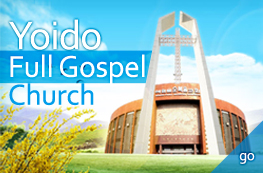Emotions run deep in this ideologically based conflict, and the church’s spirit of “sharing our neighbors’ wounds” may be the only bridge to healing and reconciliation. Just as Jeju Island is seeking reconciliation at this 70th anniversary of the 4.3 (April 3) incident, church circles are coordinating their steps to realize a history of healing in Yeosu, Suncheon and other parts of eastern Cheonnam.
On October 18, marking the 70th anniversary of the Yeo-Sun incident, the National Council of Churches in Korea (NCCK)’s justice and peace committee went on a peace journey in Yeosu. Former Suncheon University Professor Ju Cheol-hui, who has spent a lifetime researching the Yeo-Sun incident, led the group of 40 some pastors. Their investigation started at the underground bunker in front of the Hanhwa firm on Shinweol-ro in Yeosu, where the 14th regiment was stationed; continued to the site of the first battle at Cheonnam 5 intersection; went on to the site where the government forces were defeated by the rebelling soldiers; then to Yeosu Central Elementary School, where “traitors” (rebellious soldiers and citizens) were executed; and to the nearby “Brothers’ Graveyard” in Manseong-ri, where the dead are buried. The tour was joined by 39 members of the “Association for Bereaved Families of 4.3 Victims,” who had crossed the sea from Jeju, dressed in black, to join the investigation tour.
Oh Im-jong, vice president of the Jeju Bereaved Families Association, said, “The Yeosu soldiers who refused orders to depart to the Jeju front are our benefactors… If they had mobilized at the early stage, tens of thousands more lives would probably have been sacrificed.” On the other side, the rebellion of the 14th regiment was a lethal blow to the Rhee Syngman regime, which had been an established government for less than two months. Prof. Ju told the group, “The whole Army at the time consisted of 15 regiments, and six of them were concentrated on suppressing this region.” The Rhee regime carried out a total operation by land, air and sea, mobilizing even warships, and in nine days had completely suppressed the rebellion. Some of the 14th regiment soldiers escaped to Jirisan (Mt. Jiri) and joined the partisans, and the Rhee regime used the opportunity to create the National Security Law. An estimated 15,000 persons were killed under the pretext of ferreting out traitors in Yeosu, Suncheon, Boseong and other parts of eastern Cheonnam. What was clearly imprinted in people’s minds through this incident was the realization that opposing the system would bring gruesome death.

On the afternoon of the 19th, a 70th anniversary memorial worship service was held at Yeosu YMCA. Sharing his impressions from a recent visit to North Korea (see Kukmin Daily, October 19, page 25), NCCK General Secretary Lee Hong-Jeong (photo) said, “We still carry within us the wounds and broken fragments from the 70 years of division and cold war. I hope that through prayer, solidarity and care we will germinate a new life of healing and reconciliation.” Rev. Hong In-shik of Suncheon Central Church said in his benediction, “The very fact that the church is sharing in the pain of this region is meaningful.”
Article and photo by reporter Woo Sungkyu (mainport@kmib.co.kr), from Yeosu, with Marion Kim (marionkkim@icloud.com)
Full Story in Korean:
‘여순사건’ 끝나지 않는 갈등, 치유의 역사 기도: NCCK, 70주년 맞아 ‘평화기행’



